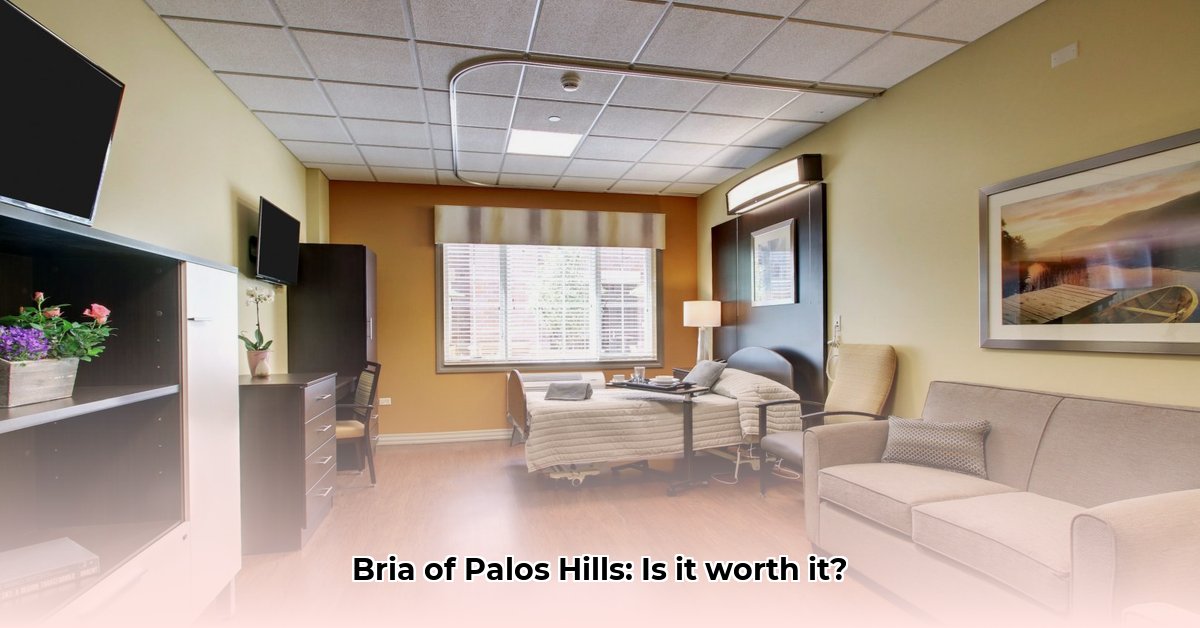
This review provides a comprehensive assessment of Bria of Palos Hills, a senior care facility in Palos Hills, Illinois, based on resident feedback and objective performance data. We aim to offer a balanced perspective, allowing readers to form their own conclusions.
Resident Experiences: A Mixed Bag
Many residents describe a welcoming atmosphere and positive relationships with staff. Common themes in testimonials include a friendly environment and helpful caregivers. However, the number of positive reviews alone doesn't paint a complete picture. A more detailed analysis of resident feedback from various sources—including online review platforms and direct facility surveys—is needed to uncover a more complete range of experiences.
Objective Data Analysis: Key Performance Indicators
Bria of Palos Hills receives a 3 out of 5-star rating from [Source of Rating - Replace with Actual Source]. This rating suggests areas for improvement. Let's delve into specific KPIs:
Resident Return Home Rate: Bria's rate of residents successfully returning home after a stay (60.5%) is higher than the Illinois average (47.7%) but slightly below the national average (50.4%). This suggests potential opportunities to further enhance discharge planning and community reintegration support. Why is this rate lower than the national average? Further investigation is needed.
Falls Resulting in Injuries: The percentage of falls causing serious injuries (1.4%) is concerningly higher than both the national (1.0%) and state (1.1%) averages. This indicates a need for strengthened fall prevention protocols and a review of safety procedures. What specific interventions are being used to reduce fall incidents?
Infections Requiring Hospitalization: The rate of infections resulting in hospitalization (5.0%) is above the national average (7.0%) but better than the Illinois average (7.4%). While this is a positive aspect, the higher-than-national average necessitates a focus on maintaining and improving infection control measures. How does Bria's infection control program compare to best practices in the field?
Emergency Room Visits: The rate of emergency room visits (8.7%) is slightly higher than the national average (11.9%) but lower than the state average (13.7%). Understanding the reasons behind these visits is crucial for identifying areas for improvement in preventative care. What are the primary causes of these emergency room visits?
These data points, while not wholly negative, reveal areas demanding attention and improvement strategies.
Staffing and Regulatory Compliance
Bria's nurse staffing levels exceed both state and national averages. However, higher staffing alone doesn't guarantee better outcomes. The quality of care depends on factors such as staff training, experience, and effective care coordination. A review of regulatory compliance reports from [Source of Regulatory Data - Replace with Actual Source] is necessary for a thorough assessment of adherence to standards. Transparency in this area is essential.
Strengths and Weaknesses of Bria of Palos Hills
Strengths:
- Positive resident feedback regarding staff friendliness and a welcoming environment.
- Above-average nurse staffing levels.
Weaknesses:
- Higher-than-average rates of falls resulting in injuries, infections requiring hospitalization, and emergency room visits.
- The need for greater transparency regarding regulatory compliance information.
Conclusion: A Balanced Perspective
Bria of Palos Hills presents a mixed picture. While resident testimonials highlight positive interactions with staff and a comfortable atmosphere, key performance indicators reveal areas needing improvement, particularly concerning fall prevention and infection control. Further investigation into the reasons behind these higher-than-average rates is essential. Prospective residents and their families should carefully consider this balanced assessment alongside their own research and a visit to the facility.
Disclaimer
The information presented here is based on available data and may not represent the complete picture. Readers are encouraged to conduct their own independent research, including reviewing regulatory reports and visiting the facility.